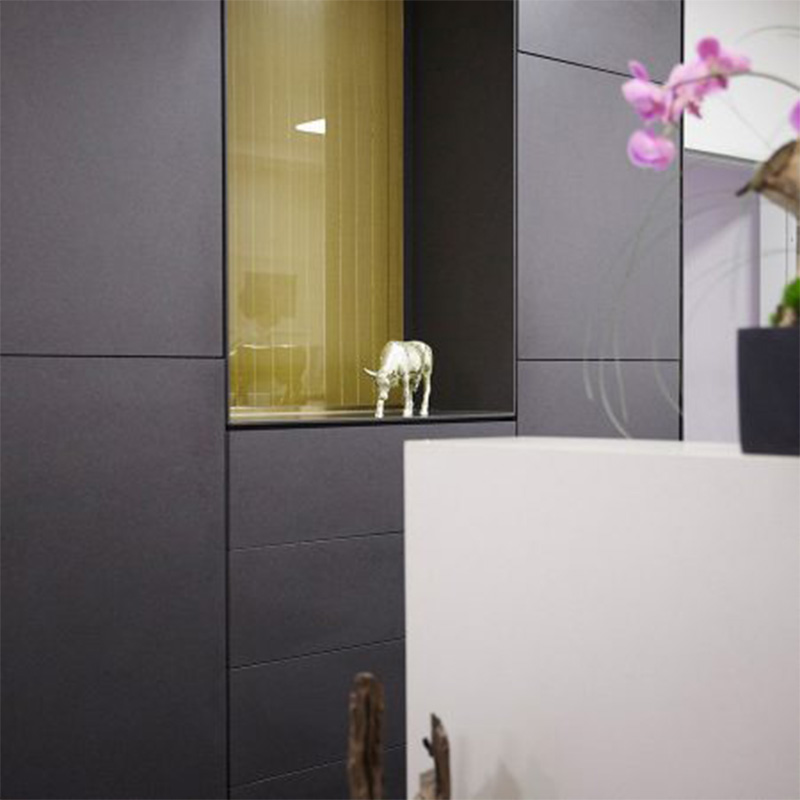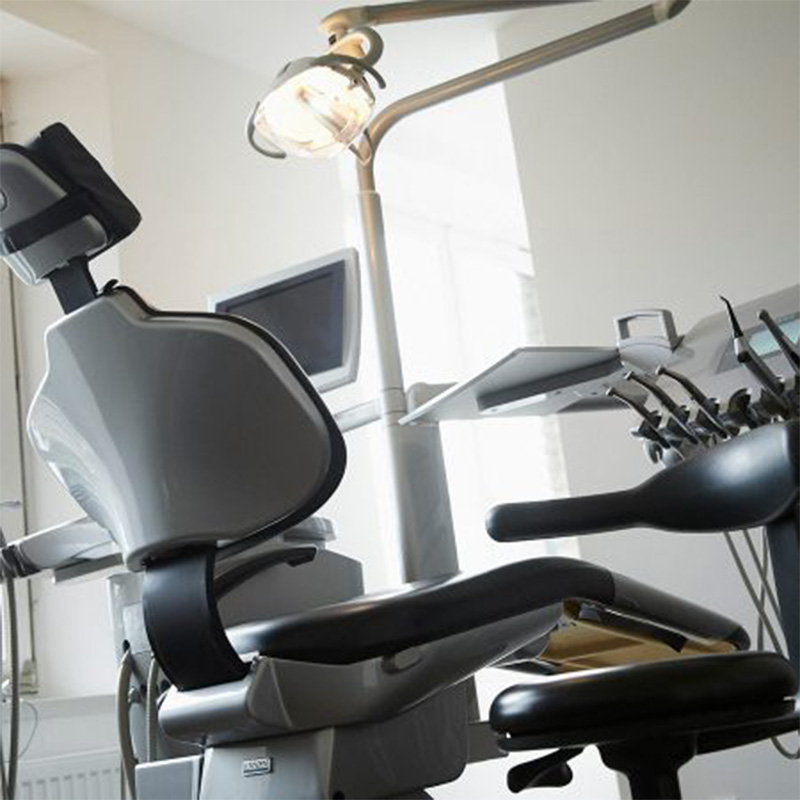nachhaltig
Zahnrettung vom Profi: Die mikroskopische Wurzelbehandlung in Köln-Deutz
Stellen Sie sich vor, Ihre Zahnwurzel ist wie eine Ankerstütze im Fundament des Kölner Doms: essenziell für die Stabilität. Eine Entzündung im Wurzelbereich kann den gesamten Zahn gefährden. So wie eine beschädigte Stütze die Stabilität des Doms beeinträchtigen würde.
Woran erkennen Sie eine entzündete Zahnwurzel?
- Sie haben auf einmal starke Schmerzen. Diese verschlimmern sich beim Berühren des Zahnes oder beim Kauen.
- Auch eine plötzliche Reaktion des betroffenen Zahnes auf heiße oder kalte Speisen und Getränke ist oft ein Anzeichen einer Wurzelentzündung.
- Der Bereich um den betroffenen Zahn schwillt an, oder der Zahn verfärbt sich dunkel.
Bei Nobis+Ganß setzen wir stark vergrößernde OP-Mikroskope ein, um Ihre Zahnwurzel zu behandeln. So können wir in neun von zehn Fällen Ihren Zahn retten und langfristig erhalten.

Inhaltsverzeichnis
Bei entzündeten Zahnwurzeln ist schnelles Handeln gefragt.
Je früher wir behandeln, desto höher ist die Chance, Ihren Zahn zu retten. Kommen Sie lieber einmal zu viel als zu spät in unsere Praxis. Fragen Sie bei akuten Schmerzen nach einem Termin in unserer Notfallsprechstunde:

„Unser oberstes Ziel ist, Ihren Zahn so lange wie möglich zu erhalten. Früh genug behandelt, gelingt uns dies in neun von zehn Fällen. Und seien Sie versichert: Moderne Hilfsmittel und sichere Betäubungen machen eine Wurzelbehandlung heute maximal schmerzarm.“
– Zahnarzt Dr. Klaus Nobis, Gründungsmitglied der Deutschen Gesellschaft für mikroskopische Zahnheilkunde
Warum entzündet sich eine Zahnwurzel?
Von außen wirken unsere Zähne stark und robust. Unter dem äußeren Zahnschmelz liegt jedoch gut geschützt das empfindliche Zahninnere (die Pulpa). Dringen Bakterien durch Löcher oder Risse in den Zahnschmelz ein, können sie dort eine Entzündung auslösen.
Es gibt verschiedene Gründe, warum das passiert, etwa:
- Karies: Unbehandelt kann eine Karies bis ins Zahninnere vordringen und dort zu Infektionen führen.
- Traumata: Ein Schlag auf den Zahn kann zu Schäden am Zahnschmelz und der Pulpa des Zahnes führen.
- Abnutzung: Übermäßiges Knirschen und Pressen kann den Zahnschmelz soweit verschleißen, dass Keime ins Zahninnere gelangen können.

Endodontologie – oder wie der Spezialist sagt: Mission Zahnrettung
Stellen Sie sich das Zahninnere wie ein Tropfsteinhöhle vor. Ihre Zahnwurzel – manche Backenzähne haben sogar mehrere Wurzeln – verästelt sich in winzigen Kanälen bis tief in den Kieferknochen. Hier sind Fingerspitzengefühl, hochwertige technische Hilfsmittel und viel Erfahrung gefragt:
- Dr. Klaus Nobis hat das Curriculum „Endodontie“ mit Erhalt des Tätigkeitsschwerpunktes Endodontie abgeschlossen.
- Bei Nobis+Ganß führen wir Wurzelbehandlungen bereits seit 15 Jahren und als erste Praxis in Köln-Deutz ausschließlich unter einem stark vergrößernden Mikroskop durch.
- In der Zahnmedizin nennen wir das Verfahren mikroskopische Endodontie.
- So spüren wir kleinste Verästelungen auf, die bei einer herkömmlichen Behandlung unentdeckt bleiben würden.
- Das erhöht signifikant Ihre Chance, den entzündeten Zahn zu behalten.
Woher stammt eigentlich der Begriff „Endodontie“?
„Endodont“ – aus dem Griechischen – bedeutet sinngemäß „das sich im Zahn Befindende“. Endodontie (auch Endodontologie) ist der Bereich der Zahnheilkunde, der sich schwerpunktmäßig mit Erkrankungen im Zahninneren beschäftigt. Dazu gehören Nerven, Blut- und Lymphgefäße.
Suchen Sie einen Zahnarzt für eine Wurzelbehandlung?
Bei Nobis+Ganß erwartet Sie eine hochwertige Behandlung durch erfahrene Zahnärzte. Vereinbaren Sie direkt Ihren Termin:
Präzision und Sicherheit: Ihr Zahnarzt setzt auf Endodontie mit dem OP-Mikroskop
Präzision ist der Garant für eine erfolgreiche Wurzelbehandlung. Deshalb folgen wir einem festen Ablauf.

So könnte Ihre Behandlung aussehen:
- Anästhesie und Kofferdam:
Zunächst erhalten Sie eine wirksame Betäubung von uns. Für eine erfolgreiche Behandlung müssen wir das Umfeld des Zahnes absolut trocken und keimfrei halten. Deshalb spannen wir ein hochelastisches Gummituch (Kofferdam) über die Mundhöhle, sodass nur der Zahn frei liegt. - Wurzelkanäle vermessen:
Im ersten Schritt öffnen wir vorsichtig Ihren Zahn. Anschließend suchen wir die einzelnen Wurzelkanäle und messen die Länge. Dafür nutzen wir ein elektrisches Messgerät. So stellen wir sicher, dass wir auch die kleinste Verästelung perfekt sehen und behandeln können. - Entzündetes Gewebe entfernen:
Unter dem stark vergrößernden Mikroskop entfernen wir das entzündete Gewebe mit ultrafeinen und hochflexiblen Feilen. Anschließend desinfizieren wir die Wurzelkanäle mit speziellen Spülungen. Diese aktivieren wir mit dem Ultraschallgerät. So erreichen die Spülungen auch die schwer zugänglichen Bereiche. - Kanäle auffüllen:
Damit sich keine neuen Bakterien ansammeln können, füllen wir die Wurzelkanäle mit einem speziellen Material auf. - Zahn schließen:
Zum Abschluss verleihen wir Ihrem Zahn neue Stärke: entweder mit einer Füllung oder mit einer (Teil-)Krone.
Wie lange dauert eine Wurzelbehandlung?
Eine Wurzelbehandlung dauert in der Regel ein bis zwei Stunden. In komplizierten Fällen kann es länger dauern oder wir benötigen mehr Sitzungen. Nach einer ersten Diagnose können wir Ihnen hier eine genauere Prognose geben.
Wie lange halten die Schmerzen nach der Wurzelbehandlung an?
Bestenfalls sind Sie nach der Behandlung schmerzfrei. In seltenen Fällen können leichte Schmerzen oder ein Druckgefühl auftreten, wenn die lokale Betäubung nachlässt. Das sollte innerhalb weniger Tage abklingen. Sie können die Stelle kühlen, und wir empfehlen Ihnen gern geeignete Schmerzmittel für die ersten Tage.

Mikroskopische Endodontie: Wer übernimmt die Kosten?
Die gesetzliche Krankenkasse übernimmt eine Basisversorgung zur Wurzelbehandlung. Moderne Hilfsmittel der mikroskopischen Endodontie gehören leider nicht zum Leistungskatalog der gesetzlichen Krankenkassen.
Das gilt etwa für den Einsatz von OP-Mikroskopen und für die elektrische Längenmessung. Aus unserer Erfahrung steigern diese jedoch signifikant den Erfolg der Behandlung.
Wenn Sie eine private Zahnzusatzversicherung haben, übernimmt diese bestenfalls den Großteil Ihrer Zuzahlung.
Die exakten Kosten der Wurzelbehandlung variieren je nach Umfang und eingesetzten Verfahren. Nach einer ersten Untersuchung können wir Ihnen hier eine konkrete Aufstellung geben.
Haben Sie weitere Fragen zur Wurzelbehandlung?
Vereinbaren Sie direkt Ihren Termin. Wir nehmen uns Zeit für Ihre Fragen:
